When you need to strike with authority but without damage, reach for a copper hammer or brass hammer. These specialized types of hammer, often referred to as soft hammers, are essential hand tools for professionals and hobbyists alike across America. This article will delve into why copper hammers and brass hammers are indispensable, exploring their unique properties and diverse applications, particularly why the American craftsman values them so highly. We'll explore the advantages of using a copper hammer and how they serve specific needs in various industries. Keep reading to discover if a copper hammer is the right tool to add to your arsenal.
1. What is a Copper Hammer and Brass Hammer?
A copper hammer and a brass hammer are both types of hammer categorized as soft hammers. What sets them apart from the more common steel hammer is their head material. Instead of hardened steel, their hammer head is made from copper or brass, which are softer metals. This fundamental difference in material dictates their primary use. A hammer is made to deliver force, but with copper and brass, that force is applied with a gentler touch.
Imagine needing to tap a delicate piece of metal into place without scratching or deforming it. A steel hammer would be too harsh, likely leaving unsightly hammer marks or even damaging the workpiece. This is where the copper hammer and brass hammer shine. They provide sufficient weight and striking power for many tasks, but their softer striking surface minimizes the risk of damage. A copper hammer is a hand tool designed for controlled force and protection.
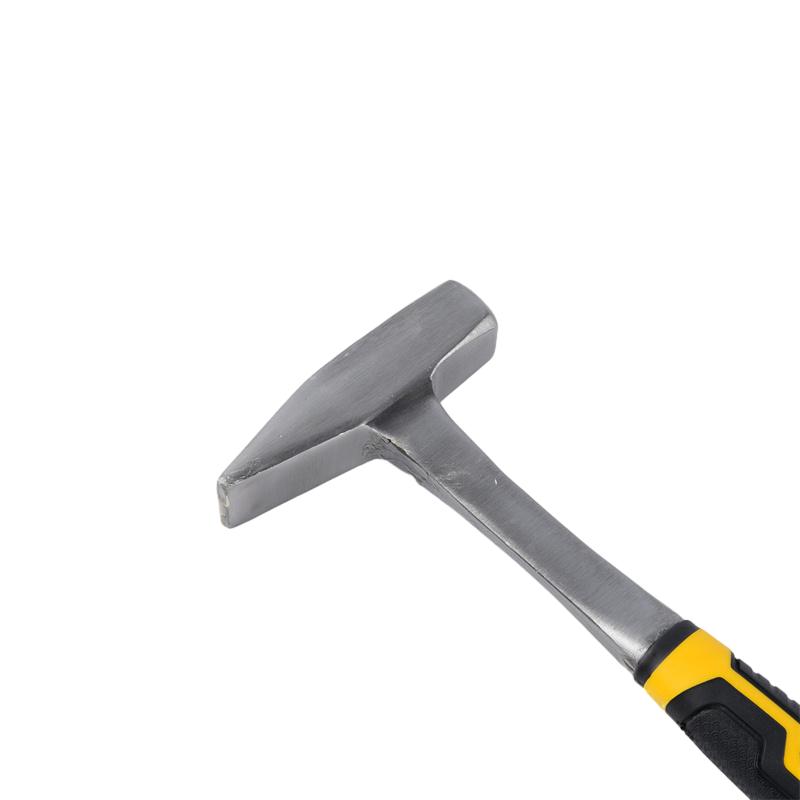
A sturdy machinist hammer, showcasing the strength often contrasted with softer copper and brass hammers.
Typically, a copper hammer has a long handle, often made of wood like hardwood such as hickory, or fiberglass, to provide a good grip and leverage. The hammer head, being a piece of solid copper or brass, is securely fastened to this handle. The design is simple but effective, built for specific applications where a standard steel hammer would be unsuitable. Just like a claw hammer is designed for nails, a copper hammer is designed for tasks requiring a hammer without the risk of damage.
2. Why Choose a Copper Hammer? The Soft Touch Advantage
The primary reason to choose a copper hammer over a steel hammer is its softer striking face. Copper is a softer metal than steel, and this softer quality is precisely what makes it so valuable in certain applications. When using a brass or copper hammer, the impact is absorbed and distributed differently compared to steel tools. This is crucial when you want to damage the tool or workpiece.
Think about assembling precision machinery. Components often need to be tapped into place with force, but scratching or denting surfaces is unacceptable. A steel hammer would almost certainly cause damage. However, a copper hammer delivers the necessary force while its softer metal head conforms slightly upon impact, preventing marring or deformation. This "soft touch" advantage is why copper hammers are considered essential non-marring tools.
Furthermore, the softer nature of copper means that in the event of a strike against steel tools or hardened components, it is the copper hammer head that will deform in place first, sacrificing itself to protect the more valuable workpiece. This sacrificial quality adds to the longevity and effectiveness of the copper hammer in delicate tasks. It's a trade-off: you get a hammer that might need its head replaced more often than a steel hammer, but you gain invaluable protection against damage in critical applications. This is a key reason why a copper hammer serve specific needs that steel hammers simply cannot.
3. Brass vs. Copper: Understanding the Material Differences
While both brass hammer and copper hammer are considered soft hammers, there are subtle but important differences between brass and copper. Brass is an alloy of copper and zinc. This alloy typically makes brass harder than pure copper, although still significantly softer than steel. This difference in hardness impacts their respective applications.
Copper is inherently softer than steel, and pure copper is even softer than steel compared to many brass compositions. This extreme softness of copper makes copper hammers ideal for situations where the utmost care is needed to prevent damage. They are exceptionally non-marring.
Brass, being slightly harder, offers a bit more durability for repetitive tasks compared to pure copper. A brass hammer can withstand more strikes before its head begins to significantly deform. This makes brass hammers a good middle ground – offering a balance between non-marring properties and reasonable durability.
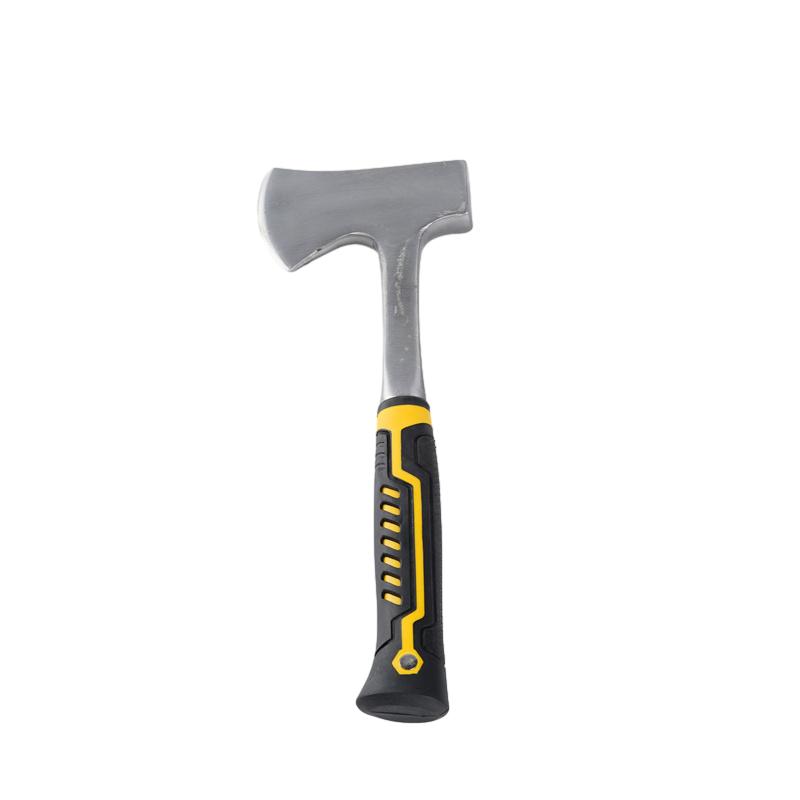
An axe, representing tools designed for heavy impact, contrasting with the controlled, gentler impact of brass and copper hammers.
Consider the task of tapping dowels into place in hardwood furniture making. A copper hammer might be preferred for its gentler touch to avoid bruising the wood fibers. However, for repeatedly striking chisels or setting fasteners in softer woods, a brass hammer might be chosen for its slightly increased durability while still being non-marring. The choice between a copper hammer and a brass hammer often comes down to the specific material being worked on and the balance needed between impact force and surface protection.
4. The Non-Sparking Benefit: Safety in Explosive Environments
Beyond their non-marring qualities, both copper and brass possess another crucial safety feature: they are non-sparking. This non-sparking property is incredibly important in environments where flammable materials or explosive environments are present, such as in the chemical industry, oil refineries, or munitions plants.
When steel tools strike against each other or against certain surfaces like rusty steel, they can generate sparks. These sparks can ignite flammable vapors, gases, or dust, leading to catastrophic explosions. Brass tools and copper tools, however, are designed to minimize this risk. Because they are softer, they are less likely to create the friction needed to generate a dangerous spark upon impact. Therefore, non sparking tools, including brass hammers and punches, are mandatory in many hazardous work settings.
It's important to note that "non-sparking" is not synonymous with "spark-proof." Brass and copper tools are non-sparking in the sense that they significantly reduce the risk of spark generation compared to steel. However, under certain extreme conditions, even these materials could potentially produce a low-energy spark. Therefore, proper safety protocols and awareness of the specific hazards in the environment are always essential, even when using non sparking hand tools. For critical applications, specialized non-sparking tools made from copper-beryllium alloys or beryllium bronze might be required for even greater safety margins.
5. When to Use a Copper Hammer: Applications Across Industries
The unique properties of copper hammers make them invaluable across a surprisingly wide range of industries. Their softer striking force and non-marring nature are essential for tasks requiring precision and surface protection. Hammers are used in so many ways, but copper hammers have their niche.
In automotive repair, copper hammers are frequently used for tasks like tapping wheel covers into place without marring the finish, gently separating components without damaging delicate surfaces, or installing bearings and seals. Mechanics appreciate the controlled force and reduced risk of damage that a copper hammer provides when working on sensitive vehicle parts.
For craftsman in woodworking and furniture making, copper hammers are indispensable for fine joinery work. Setting delicate inlays, tapping components of made of wood furniture together without bruising, and adjusting parts during assembly all benefit from the gentle yet firm touch of a copper hammer. Similarly, in jewellery-making and watch repair, where components are incredibly small and easily damaged, small brass or copper hammers are essential for delicate adjustments and assembly.
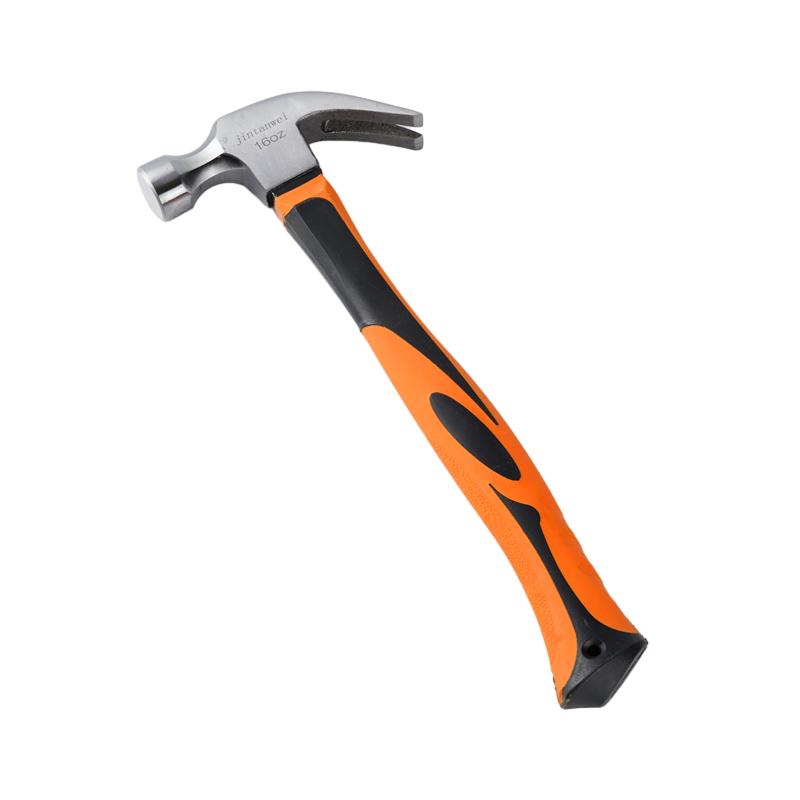
A claw hammer, a general-purpose tool, contrasted with the specialized applications of copper and brass hammers.
Beyond these specialized trades, copper hammers also find common uses in manufacturing, assembly lines, and maintenance workshops where working with delicate components is routine. Any situation where a steel hammer would be too aggressive and likely to cause damage is a potential application for a copper hammer or brass hammer. Even in construction, for tasks like gently positioning masonry blocks or aligning formwork, a copper hammer offers a controlled and less damaging alternative to a steel hammer.
6. Copper Hammers for Automotive and Mechanical Work
The automotive and mechanical fields are prime examples of industries that heavily rely on copper hammers. The precision and delicate nature of many mechanical components demand tools that can apply force without causing damage. Copper hammers can be used extensively in these areas due to their unique properties.
When working on engines, transmissions, or other intricate machinery, technicians frequently need to tap parts into place, separate stuck components, or align pieces during assembly. Using a steel hammer for these tasks would be a recipe for disaster, likely resulting in damaged threads, bent flanges, or marred surfaces. A copper hammer, however, provides the necessary striking force while its softer head cushions the impact, preventing damage to precisely machined parts.
For example, when installing or removing bearings, a copper hammer can be used to gently tap the bearing race into or out of its housing without marring the delicate surfaces. Similarly, when aligning exhaust systems or body panels, a copper hammer allows for fine adjustments without marring painted surfaces or denting thin metal. The controlled and gentle nature of the copper hammer is invaluable in these situations.
Furthermore, the non-sparking property of copper is also relevant in automotive repair, particularly when working around fuel systems or batteries where flammable vapors might be present. While not the primary reason for using a copper hammer in automotive work, the added safety benefit is certainly a plus. Mechanics often keep a copper hammer as a standard hand tool in their kit, recognizing its versatility and protective qualities for a variety of activities.
7. Brass Hammers in Woodworking and Carpentry: Avoiding Marring
Woodworking and carpentry, trades deeply rooted in craftsmanship, also benefit significantly from the use of brass hammers. While copper hammers can be used in woodworking, brass hammers are often favored for their slightly increased hardness, providing a good balance between non-marring properties and durability for tasks common in woodworking shops.
One of the primary applications of brass hammers in woodworking is when using chisels. When paring wood or creating precise joints with a chisel, a wood mallet is often used to strike the chisel handle. However, for finer work or when using smaller chisels, a brass hammer offers greater control and precision. The weight of the brass head delivers a controlled blow to the chisel without marring the made of wood handle or splitting the wood fibers.
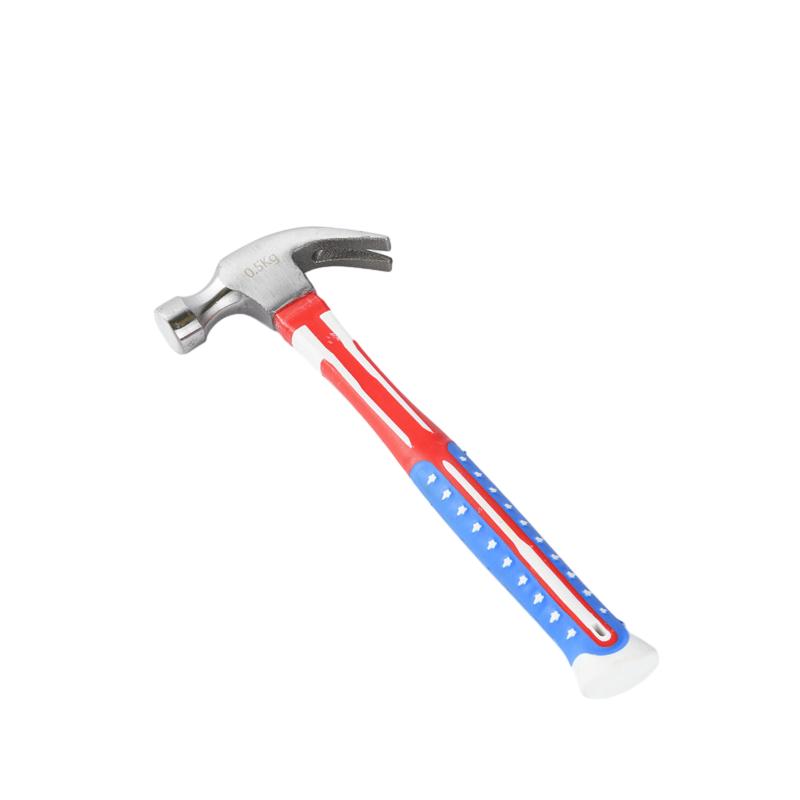
An American type claw hammer, a staple in carpentry, but brass hammers offer specialized benefits for delicate woodworking.
Brass hammers are also excellent for setting fasteners like dowels, furniture fasteners, or decorative nails in woodworking projects. Unlike a steel hammer, a brass hammer is much less likely to dent the fastener head or mar the surrounding wood surface. This is particularly important in fine furniture making and cabinetry where a clean, unblemished finish is desired. Brass hammers are also useful for adjusting the fit of joinery, gently tapping pieces together to create tight, seamless joints without marring the wood. The craftsman woodworker understands the value of a brass hammer in achieving flawless results.
8. Are Copper Hammers and Brass Hammers Non-Magnetic?
Yes, both copper hammers and brass hammers are generally non-magnetic. This non-magnetic property can be an important consideration in certain specialized applications, particularly in electronics assembly, laboratory work, and environments where magnetic interference must be avoided.
Copper itself is inherently non-magnetic. Brass, being an alloy primarily composed of copper with zinc, is also largely non-magnetic. This contrasts with steel tools, which are ferromagnetic and strongly attracted to magnets. In applications where magnetic fields could interfere with sensitive equipment or attract unwanted metallic debris, non-magnetic brass tools and copper tools are essential.
For instance, in electronics assembly, non-magnetic tools are used to prevent damage to sensitive electronic components and to avoid attracting stray metallic particles that could cause short circuits. In laboratories, non-magnetic tools are used in experiments involving magnetic fields or when working with magnetically sensitive materials. Even in certain machining operations, non-magnetic tools can be preferred to avoid attracting metal shavings to the workpiece or machine components.
While the non-magnetic nature of copper hammers and brass hammers is often a secondary benefit compared to their non-marring and non-sparking properties, it is nonetheless a valuable attribute that expands their versatility and makes them suitable for a wider range of specialized tasks.
9. Finding Quality Copper Hammer Suppliers: What to Look For
Sourcing high-quality copper hammers and brass hammers is crucial to ensure their performance and longevity. Whether you are a hardware retailer, a construction company, or a workshop owner, finding reliable copper hammer suppliers is essential. If you are looking for hammer suppliers in dubai uae or anywhere globally, here are key factors to consider:
- Material Quality: Ensure the copper head or brass head is made from high-grade materials. For copper hammers, look for hammers made of pure or high-purity copper. For brass hammers, check the alloy composition to ensure it meets industry standards and provides the desired hardness and durability.
- Construction and Durability: Examine how the hammer head is head is fastened to the handle. A secure and robust fastening mechanism is crucial for safety and preventing the head from loosening during use. Handles made of wood like hickory or strong fiberglass are preferred for durability and shock absorption. Consider the overall build quality and whether the hammer is designed for heavy-duty or light-duty applications.
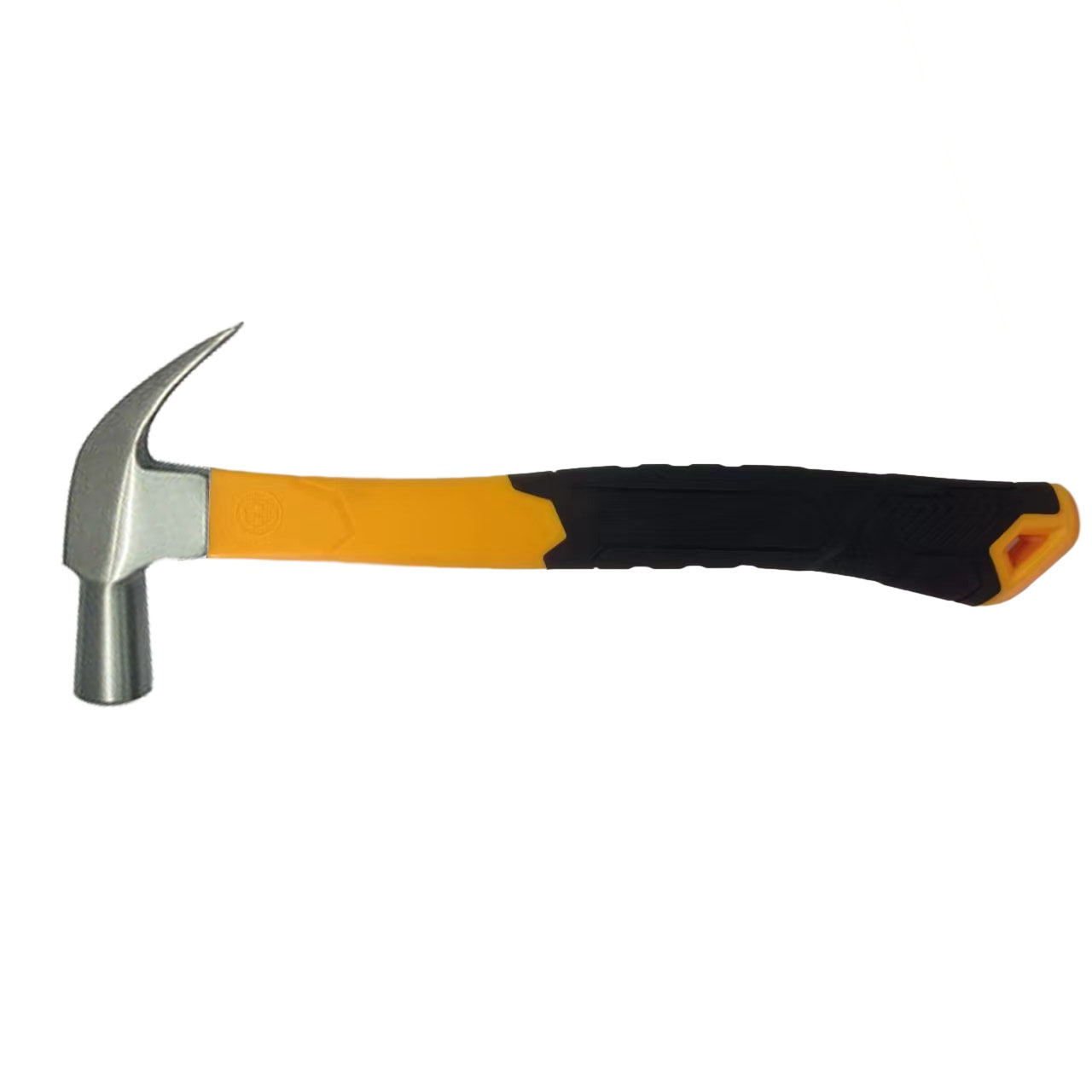
A British type claw hammer, highlighting the global diversity in hammer designs and manufacturing.
- Variety and Range: A good supplier should offer a variety of activities and types of hammer, including different sizes, weights, and styles of copper hammers and brass hammers. This allows you to source a comprehensive range of tools to meet diverse customer needs or workshop requirements. Look for suppliers who offer copper hammer options from small brass hammers for delicate work to larger sizes for heavier tasks.
- Certifications and Standards: If safety certifications are important for your market (e.g., safety standards for non-sparking tools), ensure the supplier can provide relevant documentation and compliance certificates. This is particularly crucial if you are exporting to markets with stringent safety regulations.
- Supplier Reputation and Reliability: Choose copper hammer suppliers with a proven track record of quality, reliability, and timely delivery. Check online reviews, ask for references, and consider visiting their factory or exhibition booth if possible to assess their capabilities firsthand. As Allen from a factory in China with 7 production lines, participating in exhibitions is a key promotion channel to build trust and demonstrate product quality to potential potential customer identities in USA, North America, Europe, Australia.
10. American Hammer Tradition: Why Copper and Brass Remain Popular
The American hammer tradition is rich and diverse, encompassing a wide range of type of hammers designed for specific trades and applications. Within this tradition, copper hammers and brass hammers hold a special place, particularly in craftsmanship and precision work. The enduring popularity of American hammer designs using brass and copper is rooted in both historical practices and practical advantages.
Historically, copper and brass were readily available and relatively easy to work with, making them accessible materials for tool making. Early American craftsman across various trades, from blacksmithing to woodworking, recognized the unique benefits of soft hammers for tasks where steel hammers were too aggressive. The tradition of using copper hammers for non-marring and non-sparking applications was passed down through generations of craftsman or builders.
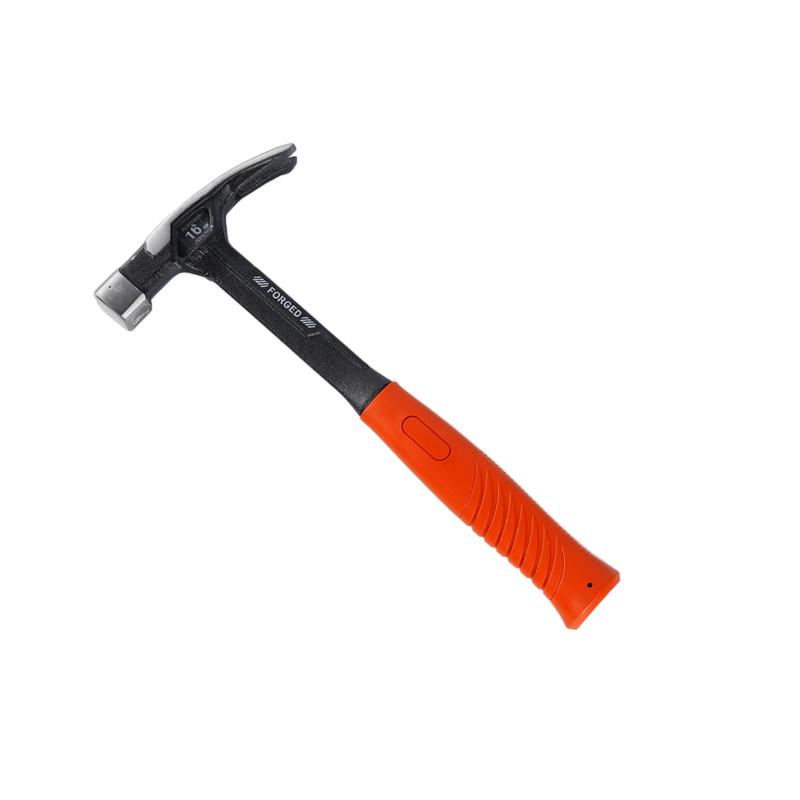
An integrated claw hammer, showcasing modern hammer design alongside traditional materials like copper and brass.
Even with the advent of new materials and manufacturing techniques, copper hammers and brass hammers have retained their popularity in the American hammer market. This is because their fundamental advantages – non-marring, non-sparking, and controlled impact – remain highly relevant in modern industries. American craftsman and industries that value precision, surface protection, and safety continue to rely on copper hammers and brass hammers as essential hand tools. The american hammer legacy is one of practicality and adaptation, and copper and brass hammers perfectly embody this spirit.
11. Abasco Tools and the Copper Hammer Legacy: What does says abasco tools reveal about the industry?
When considering copper hammers, the name Abasco Tools might come up, particularly in discussions about industrial and non-sparking tools. What does it mean when someone says abasco tools in the context of copper hammers? It often indicates a recognition of Abasco as a manufacturer or supplier known for non-sparking tools, including copper hammers, and other specialized industrial hand tools.
Abasco Tools, though the prompt does not provide specific details about them, likely represents a brand or company that has established itself in the market for specialized hammers and axes, perhaps focusing on non-sparking or non-marring applications. When someone says abasco tools in relation to copper hammers, it could imply:
- Quality and Reliability: Abasco might be perceived as a maker of high-quality and reliable copper hammers, particularly for industrial use brass and non-sparking needs.
- Specialization: The mention of Abasco Tools could suggest a focus on specialized applications of copper hammers, such as in explosive environments or non-critical machining applications.
- Industry Recognition: "Says abasco tools" might indicate that Abasco is a recognized name within certain industries that rely heavily on copper hammers and non-sparking tools, such as oil and gas, chemical industry, or mining.
In a broader sense, the reference to "says abasco tools" highlights the existence of specialized manufacturers and brands within the hammer industry that cater to niche markets and specific application requirements. It underscores that the world of hammers extends beyond general-purpose steel hammers and encompasses a diverse range of specialized tools like copper hammers, each designed for unique tasks that require specific properties and performance characteristics. It shows the depth and breadth of the hammer market and the importance of choosing the right type of hammer for the job.
12. Summary: Key Benefits of Copper and Brass Hammers
In conclusion, copper hammers and brass hammers are indispensable hand tools offering a unique combination of benefits that steel hammers cannot match. Their softer metal heads provide a softer striking surface, making them ideal for working with delicate materials and preventing marring and deformation. Here’s a quick summary of their key advantages:
- Non-Marring: Protect workpiece surfaces from damage, scratches, and dents.
- Non-Sparking: Essential for safety in explosive environments and around flammable materials.
- Controlled Impact: Deliver force with precision and reduce the risk of over-striking.
- Versatility: Suitable for a wide range of applications across automotive, woodworking, mechanical, and other industries.
- Non-Magnetic: Beneficial in electronics, laboratory, and other magnetically sensitive environments.
- Durability (Brass): Brass hammers offer a good balance of non-marring properties and increased durability for repetitive tasks.
- Sacrificial Protection (Copper): Copper hammer heads deform in place to protect valuable workpieces and tools.
For the American craftsman and industries that demand precision, protection, and safety, copper hammers and brass hammers are not just tools; they are essential partners in achieving quality workmanship and ensuring a safe working environment. Whether you are tapping delicate components, setting fasteners in fine furniture, or working in hazardous conditions, consider adding the specialized advantages of a copper hammer or brass hammer to your toolkit. You might just find it becomes one of your most frequently used to cut or shape and valued hand tools.
Key Takeaways:
- Copper hammers and brass hammers are soft hammers designed to prevent damage to workpieces.
- Copper is softer than steel and offers maximum non-marring protection.
- Brass is slightly harder than copper, providing a balance of non-marring and durability.
- Non-sparking properties make them safe for use in explosive environments.
- They are widely used in automotive, woodworking, mechanical, and jewellery-making applications.
- When sourcing, prioritize material quality, construction, and supplier reliability.
- American hammer tradition values copper and brass for their unique properties.
- Consider copper hammers and brass hammers for any task requiring controlled force and surface protection.
Post time: 02-11-2025





